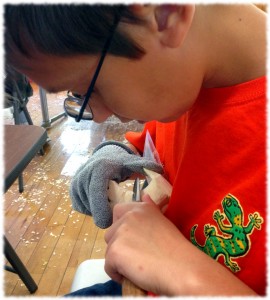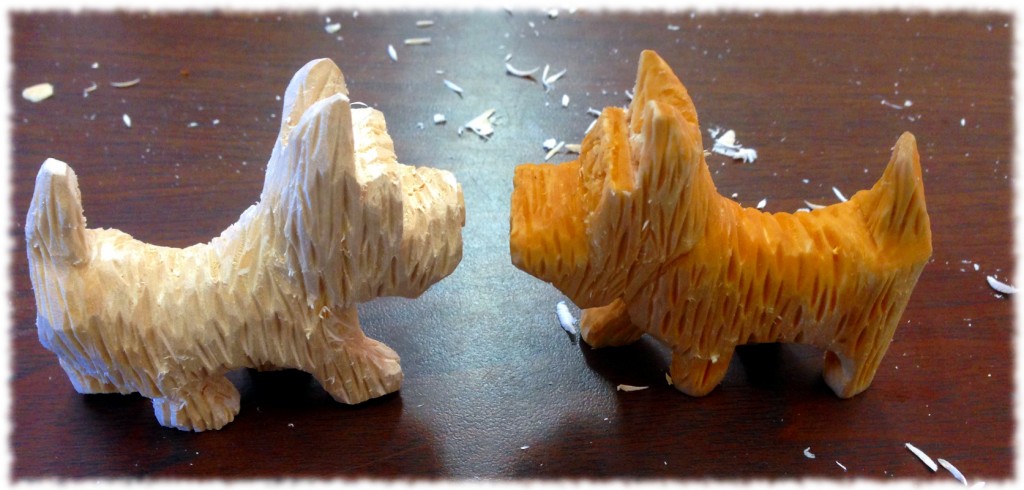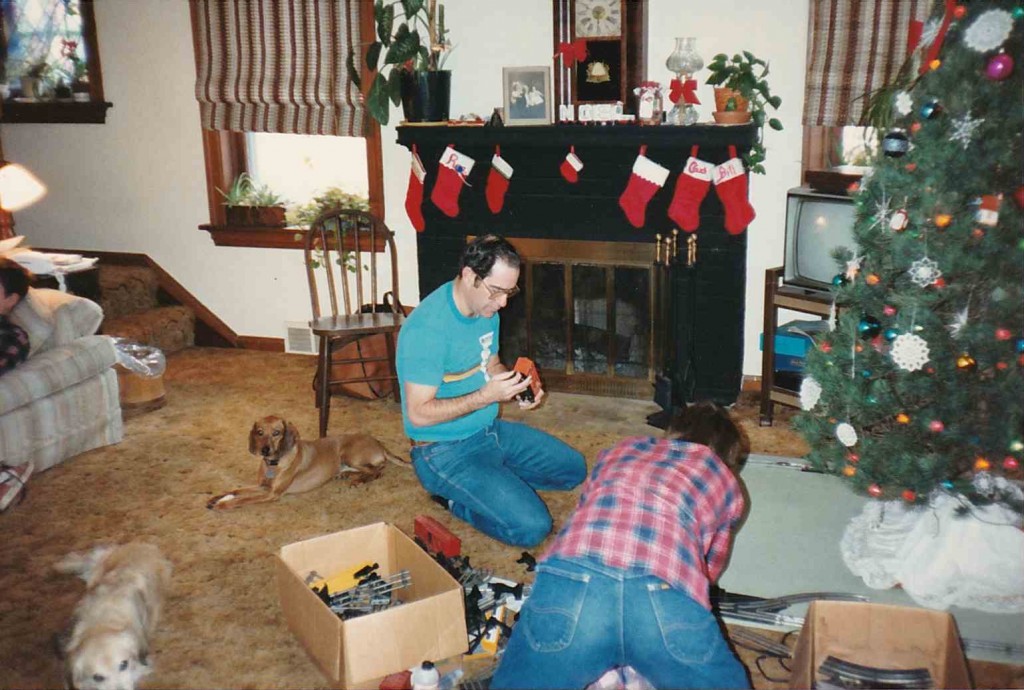
Author: Chuck
Intellivision/Pitfall 1983 (#TBT)
Will’s Room Move (Finished)
Susanna is fighting a cold today, so we didn’t make it as far as I had hoped (i.e. I didn’t get the bookshelves built). But we made the top goal for the day – we moved Will into his new room. He loves it, and it is a much better fit than his previous room. Hopefully we can make his previous room a good fit for us…


Baby Picture 1974 (#TBT)
Picking Pumpkins (and Apples)
Yesterday morning we visited Holmberg Orchards in Gales Ferry to pick apples for the week and pick up some fall decorations (pumpkins). It was a beautiful day and the orchard was crowded, but well worth the trip.


Apples, Apples and Woodcarving

We had a busy Saturday. Busy enough we had to split up into two groups.
My mom is visiting for the weekend – a nice way to start off the fall. She arrived on Thursday, and I took Friday off of work. We visited B.F. Clyde’s Cider Mill in North Stonington on Friday while the boys were at school and Susanna at work. It was interesting enough that she and Susanna decided to take Will back on Saturday while I was out with Ben.
Of course, the mill was empty on Friday, but the lines were out the door on Saturday. But they only press cider on weekends, so Will, Susanna and my mom got to see it in operation even if they couldn’t get into the store with the crowds.
That afternoon, Will decided he wanted to make apple crisp – his favorite dessert right now. My mom found a recipe and helped him make the apple crisp. It was even better than the apple crisp we had bought at the local orchard last month. I’m pretty sure Will will be making another batch (or two) now that he knows what to do (considering he ate half of the apple crisp last night after dinner).
Ben and I headed east for a different sort of adventure. I had signed him up for a woodcarving class for his birthday. It was an introduction to woodcarving at the Rhode Island Woodcarving Retreat (hosted by the Mystic Carvers).

It was an amazing experience. We arrived at 8AM and carved until after 3pm (with a few breaks). Ben didn’t get bored or frustrated, he just kept working. Even when I was getting tired, he kept going.
The group of novice carvers worked on a carving of a dog using a carving knife. It was a good pace for a start, and the project was complicated enough to challenge us without being too complicated to complete. Of course Ben was one of two people at the whole retreat under the age of 40, and I think the group thought it was nice to see someone young interested in the craft. And everyone was impressed that he was able to concentrate for over 6 hours on carving. I’m impressed that I was able to do the same (I wasn’t surprised about Ben – he has always been good at those types of projects – me not so much).
He was invited my many members of the Mystic Carving club to join the club. The club meets once a month and offers novice carving lessons at each club meeting. We will probably go to the next meeting (in two weeks) and see if Ben likes it. He loved the class, so I’m thinking we will have fun at the club.

I guess now Ben needs to get some carving knives. Luckily it is a hobby that doesn’t need a lot of tools/equipment to get started. Now I need to spend a day to let my right hand/arm rest from all the work yesterday.
Soccer Outfit 1982 (#TBT)
Getting Started on the Next House Project
This weekend we “broke ground” on the next house project. The end goal of the project is to swap bedrooms with Will and renovate the guest room into a nursery. And since it is inside, it doesn’t actually involve breaking any ground.
The project is really a series of projects and juggling of rooms. It almost asks to be planned out using Microsoft Project. But I won’t. I’ll just think about it.
The first step was to convince Will to move rooms. He agreed in theory when we discussed it this summer, but didn’t seem too excited about it (until tonight). As part of the sell, I agreed to add a light switch to the room and some outlets (and a light to the closet). The goal for this weekend was for me to finish electrical work and for Susanna to clean out the bedroom closet. And we finished ahead of schedule. We finished by dinner last night. I can’t believe we lived in the room for so many years without a light switch and only one outlet. Sometimes I just need the right incentive to get moving on things.
Today we decided to rearrange our bedroom to the layout that Will wants. He wont’ move in this weekend, but he can see what it would look like. Now he can’t wait to move. We even convinced him to get rid of the couch he currently has in his room. He is getting our bed, and it is large enough for Targa to sleep in the bed with him. I thought it would be difficult to get him to move. It turns out that it will be difficult to get him to wait.
The next step will be to move us into the guest room and Will’s belongings into our room. We will get that done in two weeks. Susanna will move his belongings and I will build bookshelves for his bedroom (they will go in the closet). Once we move him in, the only remaining thing will be to look for a bigger desk for him (eventually).
Once his old room is empty Susanna will paint the room and I will build shelves for the closets. Our plan is to have all that finished by early November, and have our belongings moved into the new bedroom.
Once we finish the room swap, we will gut and refinish the nursery with a goal of being done around Christmas – in plenty of time for Isabella. Anyone interested in helping install drywall?
Why the room swap? Will currently has the largest room in the house – we had the chimney taken out of the room a while ago, so it is now a reasonably useful room. It is also located next to what will be the nursery, so it will be a lot easier if we are near the baby. I also think Will is ready for a room that is a little smaller than his current room. He doesn’t use most of the space in his room, and I think he will be much more comfortable in the new room. And, as of tonight, Will completely agrees.





